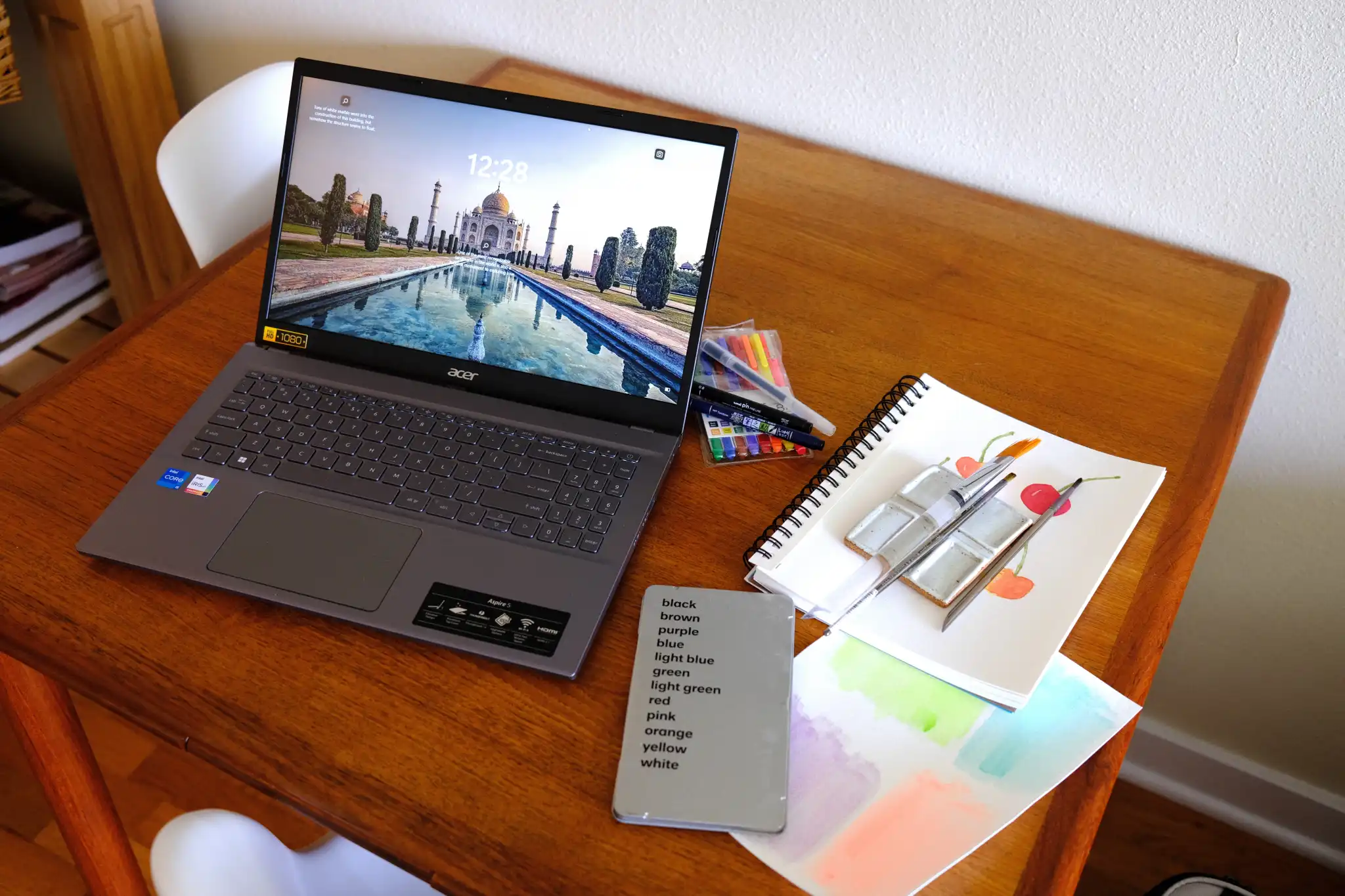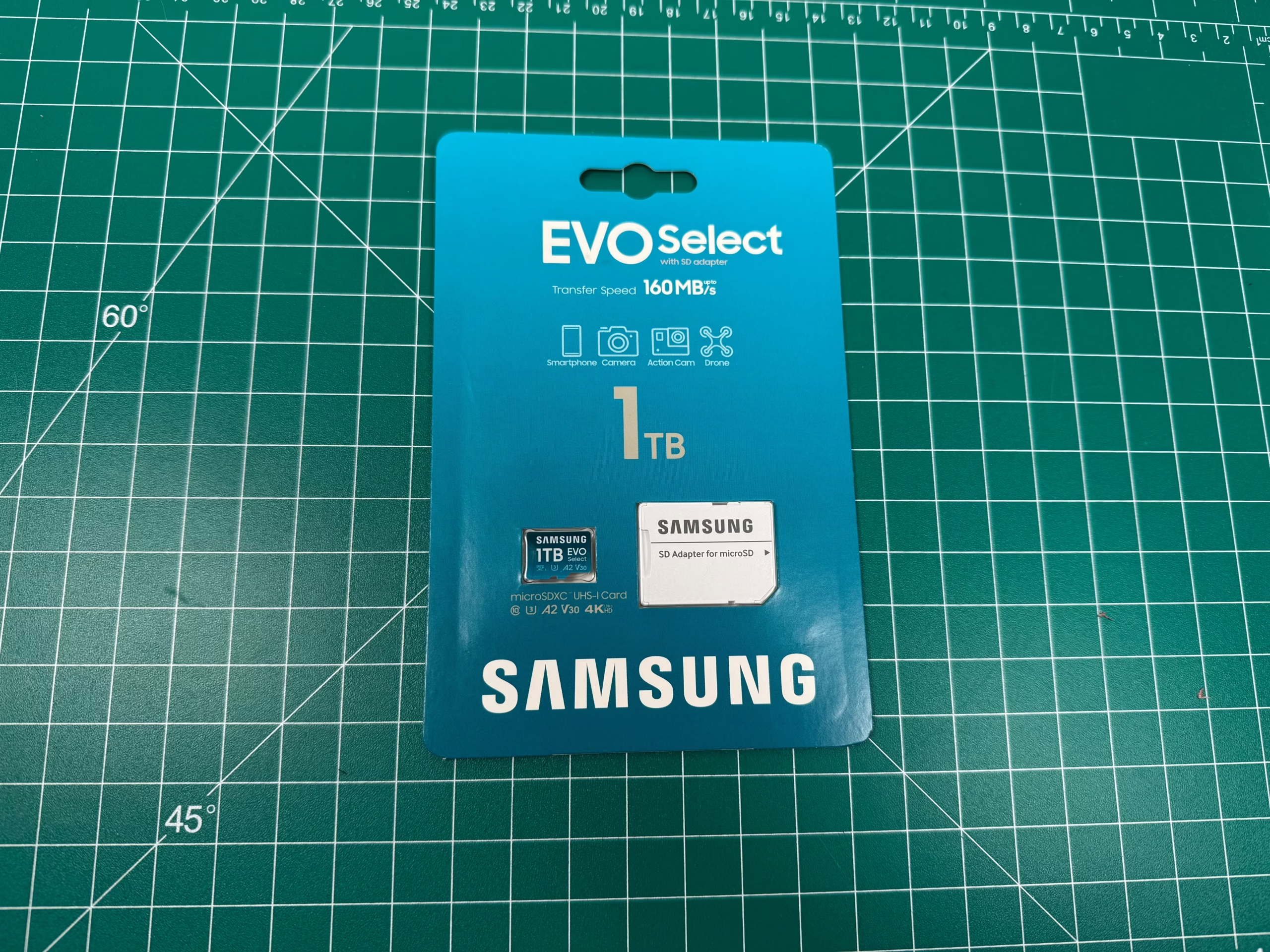If you’re a teacher, you know what a difference it makes to be prepared with the right tools and supplies. While pencils and sanitizer are no doubt important, a proper laptop is an essential tool for today’s educators. Of course, you’re going to want value for your purchase, with a focus on the right specs. You’ll need something that delivers powerful processing performance. Ample storage is important as well, so there’s no concern about storing a multitude of documents and media files. If you’re not sure where to begin your search, don’t worry.
Since it’s back-to-school season, it’s a good time to take advantage of sales and score a killer deal on your next laptop. See our roundup of the best back-to-school deals for recommendations. And for even more laptop choices, see our roundup of the best laptops.
Samsung Galaxy Book3 Ultra – Best laptop for teachers overall
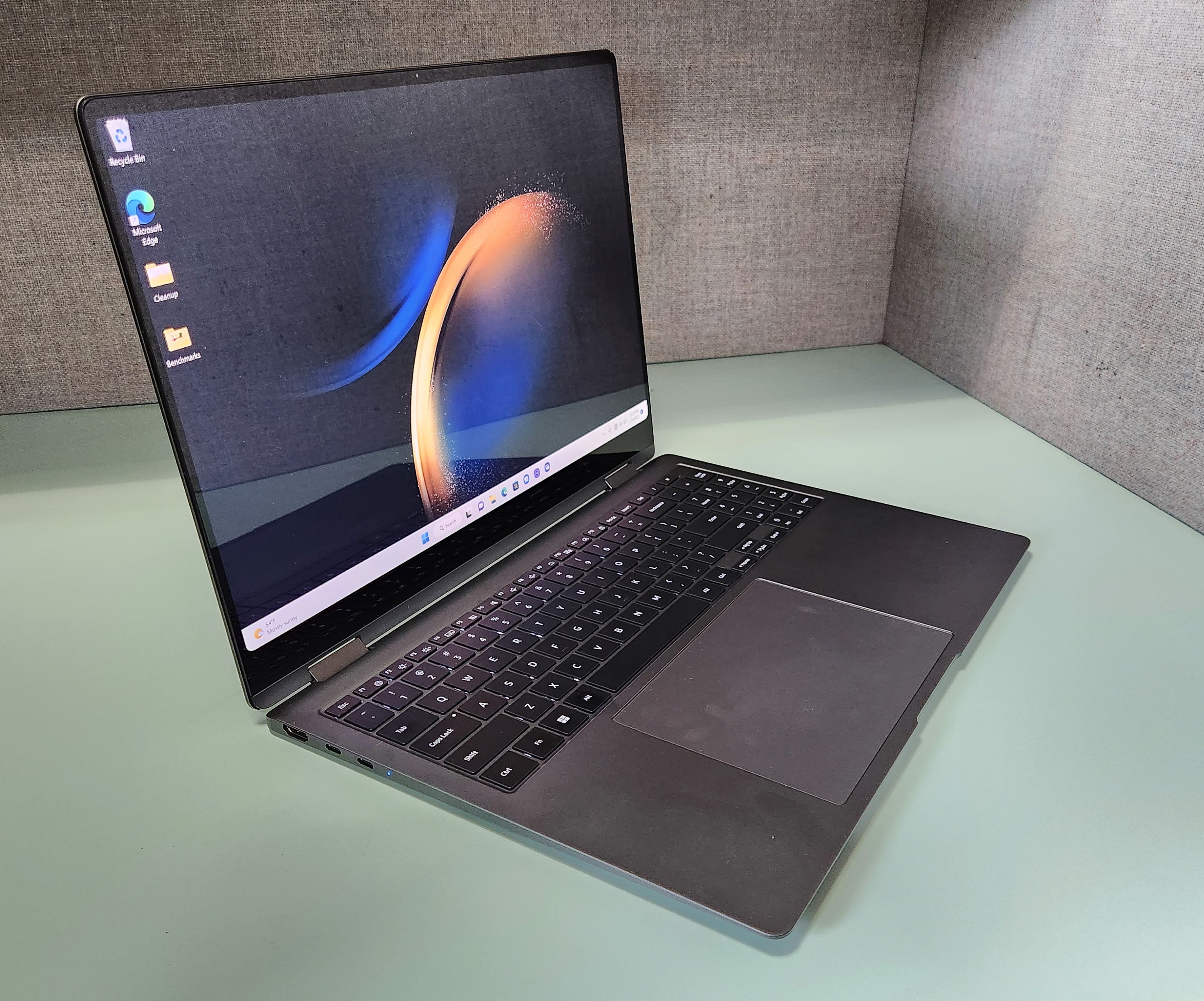
Pros
- Solid performance and great battery life
- Gorgeous, powerful OLED screen
- A 1080p webcam with Windows Studio Effects
- Good interaction with Galaxy device ecosystem and apps
Cons
- Average keyboard, trackpad
- Audio needs some tweaking
With its superb battery life, lightweight form factor, and powerful CPU performance, the Samsung Galaxy Book3 Ultra has a lot to offer. The 1080p webcam is a nice addition for remote learning, too. As for the battery life, our tests showed that it trounced the competition with 13.1 continuous hours of use, which means you can kiss those outlet-hunting days goodbye.
The Galaxy Book3 Ultra features a 13th-gen Intel Core i7 CPU, the new Nvidia GeForce RTX 4050 GPU, 16GB of RAM, and 512GB of SSD storage. With that kind of power this machine should have no problem handling productivity tasks as well as day-to-day use. It also comes with a 16-inch OLED display that boasts a resolution of 2880×1800 and a refresh rate of 120Hz. Visuals should be both vivid and detailed. If you’re looking for a laptop that ticks all of the productivity boxes and more, then the Galaxy Book3 Ultra is well worth consideration.
Acer Aspire 3 – Best affordable laptop for teachers

Pros
- Spacious keyboard with number pad
- HD webcam
- Solid video playback performance
- Decent business app performance
- Workday-long battery life
Cons
- Poor gaming graphics performance
- Basic 1080p display
- Small 128GB storage drive
The Acer Aspire 3 is a great option for budget-conscious teachers out there. It’s reasonably priced and performance is fast enough for everyday tasks like writing e-mails, online research, and grading homework. The full-size keyboard provides loads of room, which is perfect for longer typing sessions. While that’s all well and good, the internal bits are really what makes this laptop a good value buy.
This laptop has an Ryzen 3 7320U CPU, 8GB of RAM, and 128GB of PCIe SSD storage. The 15.8-inch display has a resolution of 1080p and decent color quality. Also, in our tests we found that the battery should hold a charge for up to eight hours of continuous use—enough for the average full workday. The design, while a little utilitarian, is one of the sturdiest builds we’ve seen on a budget laptop. All in all, the Acer Aspire 3 gives you plenty of bang for relatively few bucks.
Acer Swift Edge 16 – Most portable laptop for teachers
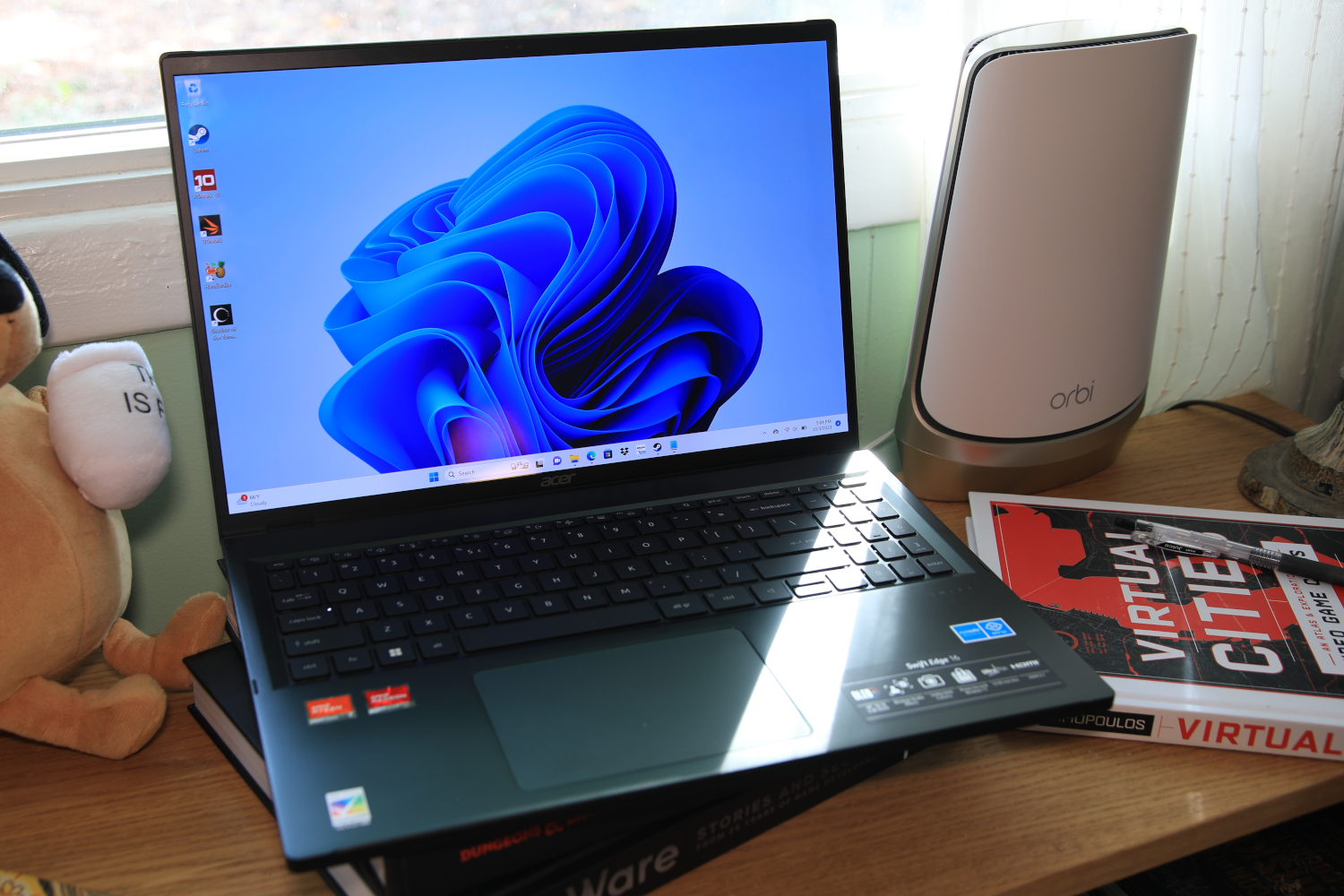
Pros
- Extremely thin and light
- Gorgeous OLED display
- Strong CPU performance in short-duration tasks
- Integrated Radeon graphics performs well
Cons
- Design doesn’t impress
- Mediocre keyboard and touchpad
- Very weak speakers
That last thing you want to do everyday is lug a heavy, unwieldy laptop around with you between classes. Enter the Acer Swift Edge 16, which is a lightweight 16-inch laptop with an ultra-slim design. Measuring in at only 0.51-inches thick and weighing a featherlight 2.71 pounds, the Swift Edge 16 gives you all of the screen real-estate as competitors without adding additional size or weight. The larger screen might make for a larger footprint than some ultra-portables, but we fully welcome that extra OLED display size.
Acer also included solid processing performance with an AMD Ryzen 7 7840U processor, but the lack of discrete graphics means you aren’t likely to be playing any games on this rig. Still, it is more than suitable to handle productivity tasks or apps with ease. The Swift Edge 16 is reasonably priced as well and undercuts the cost of alternatives, adding to its appeal.
Asus Zenbook 14 Flip OLED – Best 2-in-1 laptop for teachers

Pros
- The CPU performance is suitable for a range of productivity tasks
- It has a long battery life
- Connectivity includes two Thunderbolt 4 ports
Cons
- The display could be a little brighter still
- The function keys are quite small
- Intel Iris Xe graphics only
The latest Asus Zenbook 14 Flip OLED upgrades previous versions with a new 13th-gen Intel processor and a beautiful OLED screen. Thanks to the aforementioned Core i7 processor, Intel Iris Xe integrated graphics, 16GB of DDR5 RAM, and a 1TB SSD, there is plenty of performance for everyday productivity tasks. It’s also a sleekly designed svelte laptop that’s just over half an inch thick and weighs a mere 3.31 pounds. There are some great extras for teachers with this laptop as well. These include the 1080p webcam, which helps you look nice for online lessons and meetings, an OLED touchscreen display, and an included stylus pen for when you want to flip the screen back and use the device in tablet mode.
Admittedly, for this price we’d like to see an option for more robust graphics such as a discrete graphics card, but the Intel Iris Xe is still more than manageable for most daily work tasks. 2-in-1s in general make great tools for teachers as they are flexible enough to fit into any setting and they can fulfill multiple roles. For anyone looking to purchase a 2-in-1, the Zenbook 14 Flip OLED should be at the top of your list.
Lenovo ThinkPad X1 Nano – Best keyboard
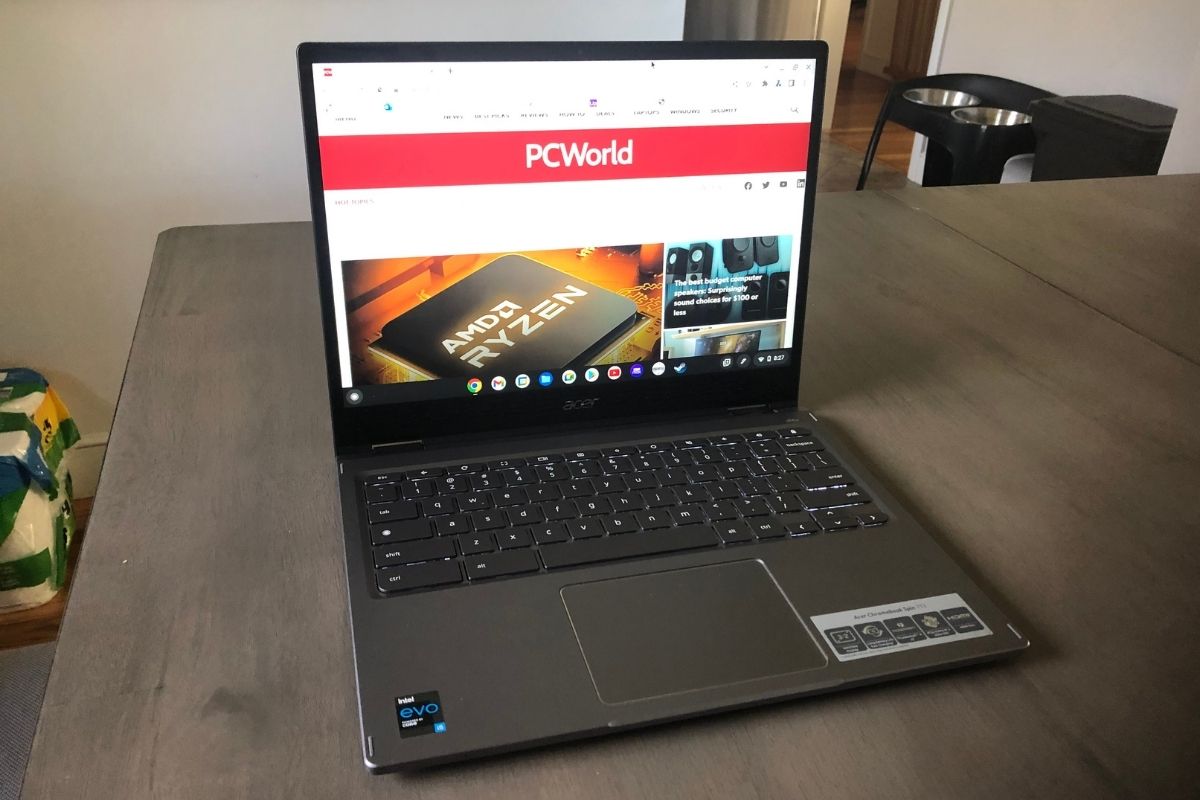
Pros
- Thin, lightweight design
- Excellent keyboard
- Good processor performance
- Supports Wi-Fi 6E and optional 4G LTE
Cons
- Small touchpad
- Limited physical connectivity
- Short battery life
Lenovo laptops are always great options for business professionals, and the latest ThinkPad X1 Nano is no exception. The aim with the X1 Nano is to cram an enjoyable laptop with great performance into the smallest footprint possible, and Lenovo did a great job meeting this goal. It comes with the latest 13th-gen Core i7-1360P processor, 16GB of RAM, and 512GB of SSD storage. But the real kicker is the excellent keyboard. The layout is surprisingly spacious with easy-to-find keys that have good travel and a clicky, satisfying bottoming action.
All of this is somehow fit into a pint-sized footprint of 11.54×8.19 inches with a thickness of just 0.58 inches. Plus it weighs a mere 2.18 pounds. It is an easily portable laptop to haul between classes or fit into your bag for a trip to the coffee shop for some paper grading. The only issue we found was the battery life, which in real-world tests needed to be recharged in the middle of a workday with heavy use. Regardless, if you want a compact laptop that provides a satisfying typing experience for when you’re grading assignments and writing rubrics look no further than the Lenovo ThinkPad X1 Nano.
Asus Zenbook 14 OLED – Best battery life

Pros
- Solid build quality
- Excellent, high-resolution OLED touchscreen
- Great battery life
Cons
- Boring design
- Touchpad could be larger
- Mediocre performance
When you’re running between the teacher’s office, classes, and meetings, you need a laptop that can hold a charge without needing to be plugged in all day. The Asus Zenbook 14 OLED provides marathon length battery life and more. Our tests showed that it can stand up to 15 hours and 20 minutes of continuous use before needing a charge—in a real-world setting this will likely be reduced to 10 to 12 hours. It easily outlasted most competitors and the battery will have no issues keeping you productive on the go throughout your work day and even through parent-teacher conferences and grading homework at the end of it all.
The Asus Zenbook 14 OLED also comes with a beautiful 14-inch 2880x1800p OLED touchscreen display and a sturdy metal chassis that can withstand the rigors of the teaching life. And while not the cheapest model on this list, it is still relatively budget friendly as a sub-$1,000 laptop.
Acer Aspire Vero – Best eco-friendly option
Pros
- Peppy performance
- Good 1080P display
- Eco-friendly, quality materials
- Excellent battery life
- Convenient, fast fingerprint reader
Cons
- Still some bloatware
- Flex in the laptop is more noticeable
It’s no slouch in the performance department either, sporting a Core i7 processor, Iris Xe integrated graphics, 16GB of RAM, and a fast 512GB M.2 NVMe SSD. Overall, the Vero is an attractive ultraportable for the eco-conscious educator.
HP Dragonfly Pro – Best MacBook alternative for teachers

Pros
- Premium materials
- Powerful AMD Ryzen chip
- Surprising four speaker setup
- Good battery life
- High degree of value for the dollar
Cons
- All myHP keyboard keys should be remappable
- No user upgradeable components
- No headphone jack
- Only 2 high-speed USB-C ports
Apple’s line of MacBook Pro laptops are known for their attractive design, incredible efficiency, and great performance. But they are also extremely expensive. Now HP has created a worthy competitor with the Dragonfly Pro. They partnered with AMD to create a svelte laptop that packs the latest Ryzen 7 processor with 8 high-performance cores and a powerful Radeon 680M graphic card. The design of the laptop is spot on—it’s thin and attractive with a high quality feel made from aluminum and polycarbonate. The main drawback is that, just like the MacBook Pro models, this laptop takes a minimalist approach to ports, meaning that those who rely on plug-in accessories will need to find work arounds. Also, while the display is good enough, it just doesn’t quite live up to Apple’s best. Still, for a laptop that is significantly cheaper than any of the MacBook Pro models, this Dragonfly Pro laptop from HP is an excellent option.
Lenovo Flex 5i – Best Chromebook for teachers
Pros
- Great build quality
- Vibrant touchscreen display
- Fast performance
- Nice typing experience
Cons
- Stylus not included
- Average battery life for a Chromebook
- Heavier than expected
If you’re looking for a great Chromebook, the Lenovo Flex 5i is one of the best you can get. This convertible can either be propped up like a tent or folded all the way back and used like a tablet. We were also impressed with its vibrant touchscreen display, zippy performance, and exquisite typing experience. The sleek, understated aluminum finished exterior helps to make the Flex 5i feel like something three or four times as expensive and the overall design, including the 360-degree hinge, is impressively sturdy — something essential when hauling it back and forth between your office and classes.
Plus, the Flex 5i has a fantastic keyboard that is a joy to type on and a 1200p touch display that is both crisp and vivid. Add to this the fact that it currently retails for under $500 and you’re getting an excellent all-around Chromebook for a really affordable price.
How we tested
The PCWorld team puts each and every Windows laptop through a series of benchmarks that test GPU and CPU performance, battery life, and so on. The idea is to push the laptop beyond its limits and then compare it against others we’ve tested. Chromebooks, on the other hand, go through a series of web-based tests. It wouldn’t be possible to run the same kinds of tests on a Chromebook, as they’re Chrome OS-based machines. Below, you’ll find a breakdown of each test.
Windows laptops
- PCMark 10: The PCMark 10 benchmark is how we determine how well the laptop handles general use tasks like web browsing, word processing, spreadsheets, streaming, and so on.
- HandBrake: HandBrake is more intensive than PCMark 10. It measures how long a laptop’s CPU takes to encode a beefy 30GB file.
- Cinebench: Cinebench is a brief stress test of the CPU cores. It renders a 2D scene over a short period of time.
- 3DMark: 3DMark checks if 3D performance remains consistent over time by running graphic-intensive clips. This is how we test a gaming laptop’s GPU.
- Video rundown test: To gauge battery life, we loop a 4K video using Windows 10’s Movies & TV app until the laptop dies.
Chromebooks
- CrXPRT 2: The CrXPRT 2 benchmark tests a Chromebook’s battery life.
- Speedometer 2.0: This test determines a Chromebook’s web browser performance. It simulates this by adding, completing, and removing a to-do list.
- Basemark Web 3.0: This benchmark gauges how well a Chromebook can handle web-based applications.
- Kraken 1.1: Kraken 1.1 is a JavaScript performance benchmark.
- Jetstream 2: Jetstream 2 is a combination of WebAssembly and JavaScript benchmarks. This is how we gauge how well a Chromebook runs advanced workloads.
FAQ
What CPU does a laptop for teachers need?
You won’t need a ton of processing power when it comes to lightweight tasks like grading homework, researching topics, answering student e-mail’s, and so on. That’s why we recommend aiming for something with an Intel Core i5 processor. It’s zippy enough for everyday use while still being reasonably priced. If you need more power, shoot for an Intel Core i7.
How much RAM does a laptop for teachers need?
To get the best performance out of your laptop, we recommend at least 8GB of DDR4 RAM. This will help your machine run smoother, especially if you’re using multiple programs at once. 16GB of RAM is obviously better, but it might be a little overkill depending on what you’re doing.
How much storage does a laptop for teachers need?
If you’re saving homework and other important files to your laptop, you’re going to want at least 512GB of SSD storage. Solid state drives are faster and quieter than hard disk drives. They’re also more durable and power efficient. If you’re using a Chromebook, you don’t need to worry much about storage, as you can save everything to the cloud.
How much should a laptop for teachers weigh?
A portable laptop should weigh about three pounds or less. In terms of portability and value, we suggest getting a laptop with a 13- or 14-inch display.
What kind of display does a laptop for teachers need?
Teachers spend a great deal of time in front of a screen. If you suffer from eye strain or tension headaches, don’t settle for anything less than 1080p resolution. If you can stretch your budget a bit more, 4K should provide a very sharp picture, and OLED tends to be more color accurate.

